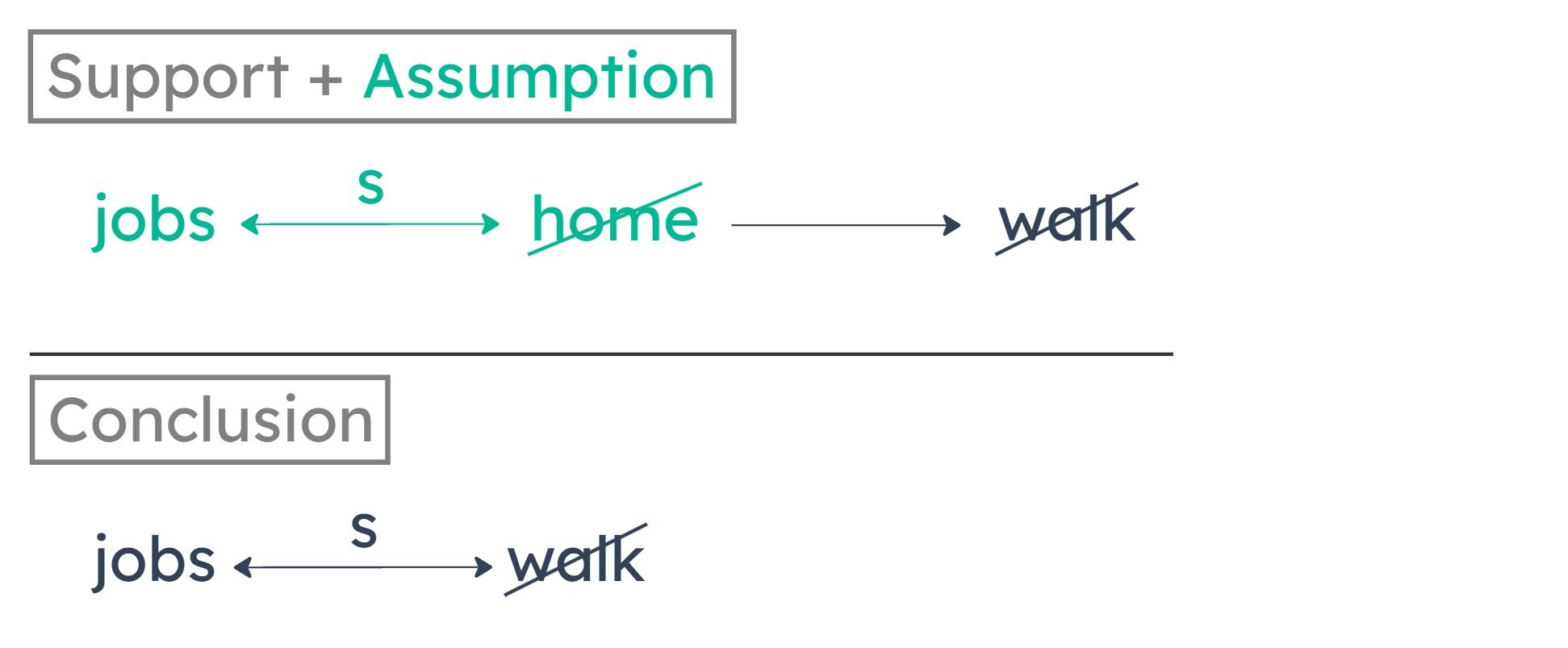A
There has been a significant increase over the last 25 years in the proportion of individuals in households with more than one wage earner.
B
The number of used cars sold annually is the same as it was 25 years ago.
C
Allowing for inflation, average individual income has significantly declined over the last 25 years.
D
During the last 25 years, annual new-car sales and the population have both increased, but new-car sales have increased by a greater percentage.
E
Sales to individuals make up a smaller proportion of all new-car sales than they did 25 years ago.
Don't worry if you didn't get this exceptionally difficult question correct. Later lessons in Advanced Logic will help to elucidate the concepts behind this question.
To see why (E) is incorrect, first recall what the practice in the stimulus was in a general form. Stated broadly, it was the practice of having people set standards from which they themselves would later benefit. This is why having executives sit on boards to determine salaries of other executives is not a great idea. This is also why having doctors sit on juries to determine damages for malpractice suits for other doctors is not a great idea. Whatever standard they set would later be used for them.
Now how does (E) do any of that? Sure you have a group of people. And there's something something money. That's it. Each person in the group is directly evaluating each other, confidentially but who cares. There's a set amount of money, say $100, to be given to the group consisting of say 5 people. Who gets how much? Well, that depends on how each person is evaluated by their peers. So... I guess if I'm in the group, I'm incentivized to give everyone else a low rating so that I could get more of the $100 pie? I guess. Wait but what am I even doing. I'm supposed to be setting a financial standard that would later benefit me. That's not what I'm doing at all. I'm just directly screwing my co-workers over so that I benefit.

By taking the contrapositive of the premise, we inferred that all students who don’t go home for lunch don’t walk to school. So, if at least some students with part-time jobs don’t go home for lunch, then some of them wouldn’t walk to school. This would guarantee the argument’s conclusion.
A
Some students who do not have part-time jobs go home for lunch.
B
Every student who goes home for lunch has a part-time job.
C
Some students who do not have part-time jobs do not go home for lunch.
D
Some students who do not go home for lunch have part-time jobs.

E
Every student who goes home for lunch walks to school.
A
When webs of many different species of spider were illuminated with a uniform source of white light containing an ultraviolet component, many of these webs did not reflect the ultraviolet light.
B
When the silks of spiders that spin silk only for lining burrows and covering eggs were illuminated with white light containing an ultraviolet component, the silks of these spiders reflected ultraviolet light.
C
When webs of the comparatively recently evolved common garden spider were illuminated with white light containing an ultraviolet component, only certain portions of these webs reflected ultraviolet light.
D
When Drosophila fruit flies were placed before a Glomosus web and a synthetic web of similar pattern that also reflected ultraviolet light and both webs were illuminated with white light containing an ultraviolet component, many of the fruit flies flew to the Glomosus web.
E
When Drosophila fruit flies were placed before two Glomosus webs, one illuminated with white light containing an ultraviolet component and one illuminated with white light without an ultraviolet component, the majority flew to the ultraviolet reflecting web.
If we bother to learn a language, then there must be poetry in that language.
Preserving a language involves motivating at least some people to learn that language.
The desire to witness the beauty of poetry motivates at least some people to learn a language.